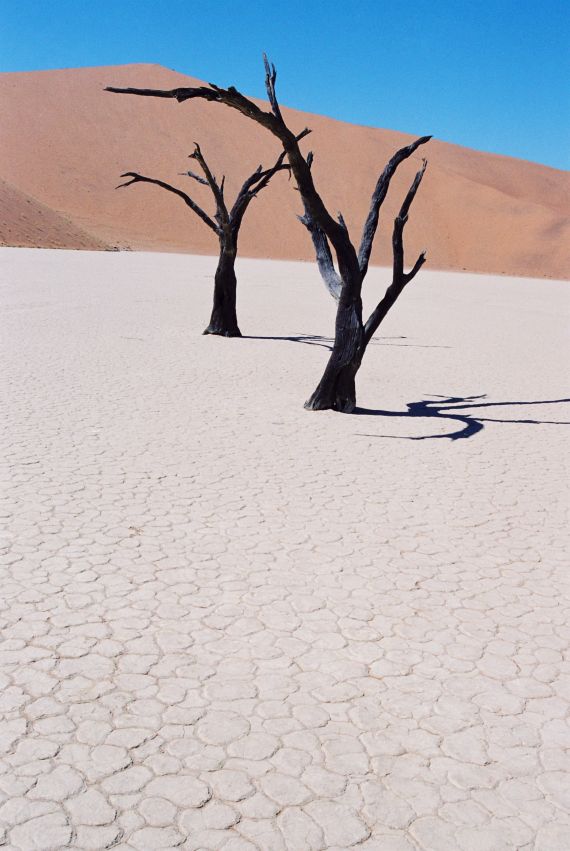
“Trees of time” by Pedro Machado, distributed by the European Geosciences Union under a Creative Commons license.
The Namib-Nauklufy National Park in Namibia is a stunning ecoregion that encompasses part of the Namib Desert and the Nauklufy mountain range. With an area of almost 50,000 square kilometres, the park covers a wide range of landscapes, including gravel plains, tall sand dunes, and an ephemeral river. The park also includes one of the main visitor attractions of Namibia, the Sossusvlei, a large dry lake or pan – surrounded by giant dunes – that only fills with water on the rare occasions that it rains in this part of the Namib-Nauklufy National Park.
It was there that Pedro Machado, a researcher at the Centre for Astronomy and Astrophysics of the University of Lisbon in Portugal, captured this interesting, if alien, scenario of dead trees and bright, contrasting colours. “More precisely, the picture was taken in Deadvlei, an awe-inspiring white clay pan situated in the salt pan of Sossusvlei,” he explains. “The old acacias (commonly known as Camel Thorn trees) died 500-1000 years ago, but as there is no humidity in this place, they did not rot, forming a beautiful fossilized forest.”
The vast Namib Desert streches over 2,000 km along coastal Angola, Namibia, and South Africa. It is the world’s oldest desert, having endured arid or semi-arid conditions for at least 55 million years. Pedro says, “For me, the Namib Desert is one of the most beautiful deserts. It has incredible colour gradients on the ground that produce colourful kaleidoscopes when the sun is low on the horizon.”
Imaggeo is the EGU’s online open access geosciences image repository. All geoscientists (and others) can submit their images to this repository and since it is open access, these photos can be used by scientists for their presentations or publications as well as by the press and public for educational purposes and otherwise. If you submit your images to Imaggeo, you retain full rights of use, since they are licensed and distributed by the EGU under a Creative Commons licence.
